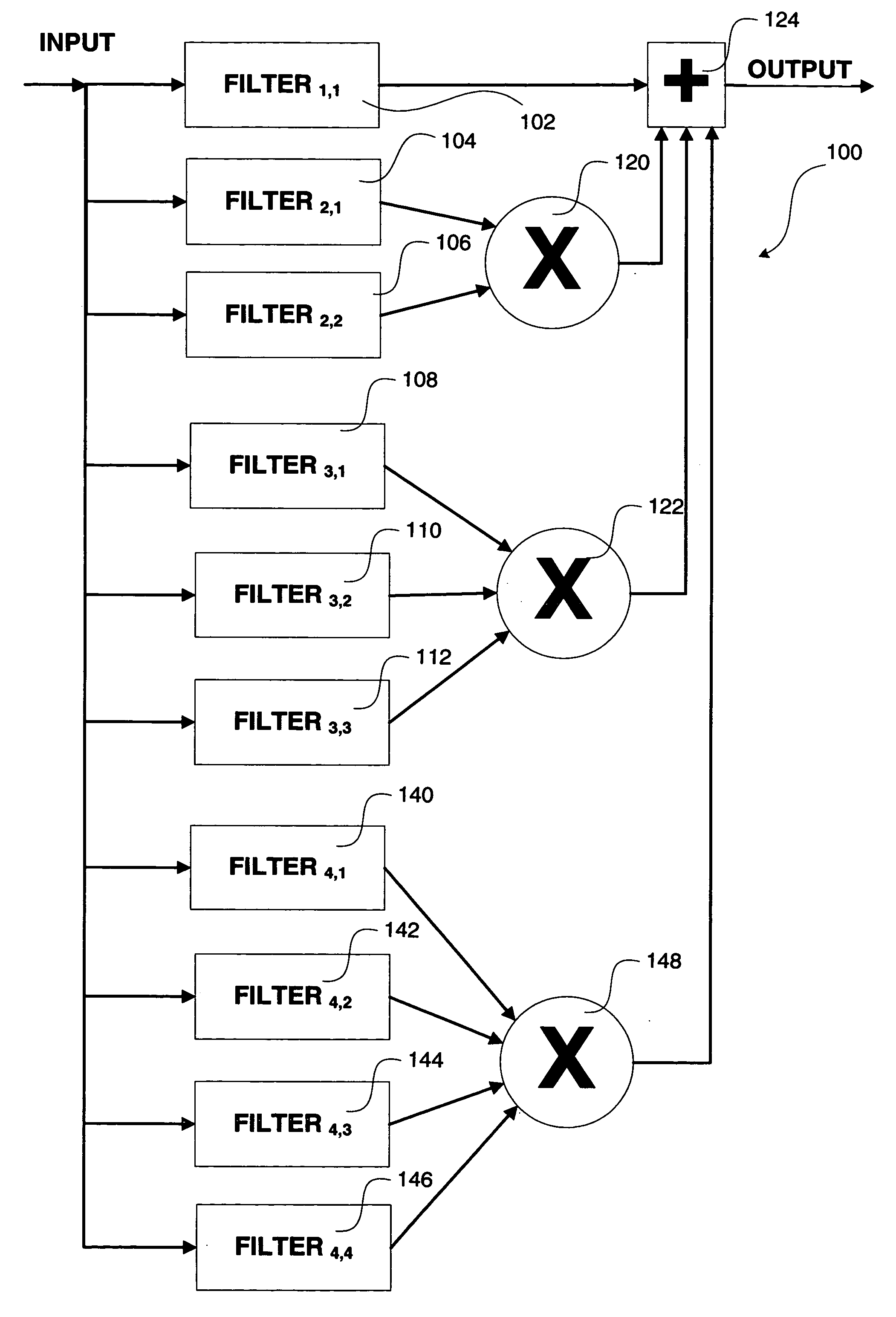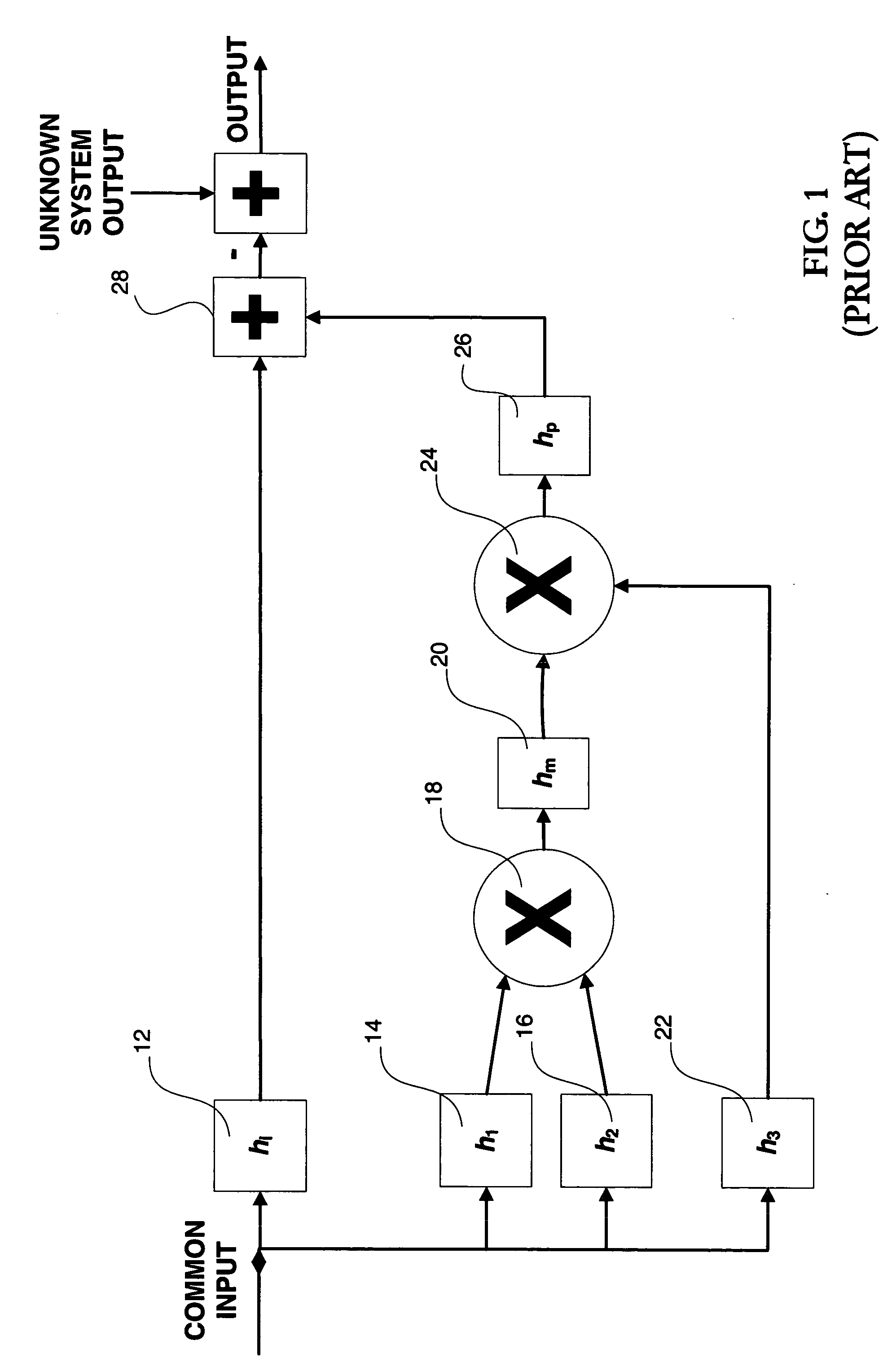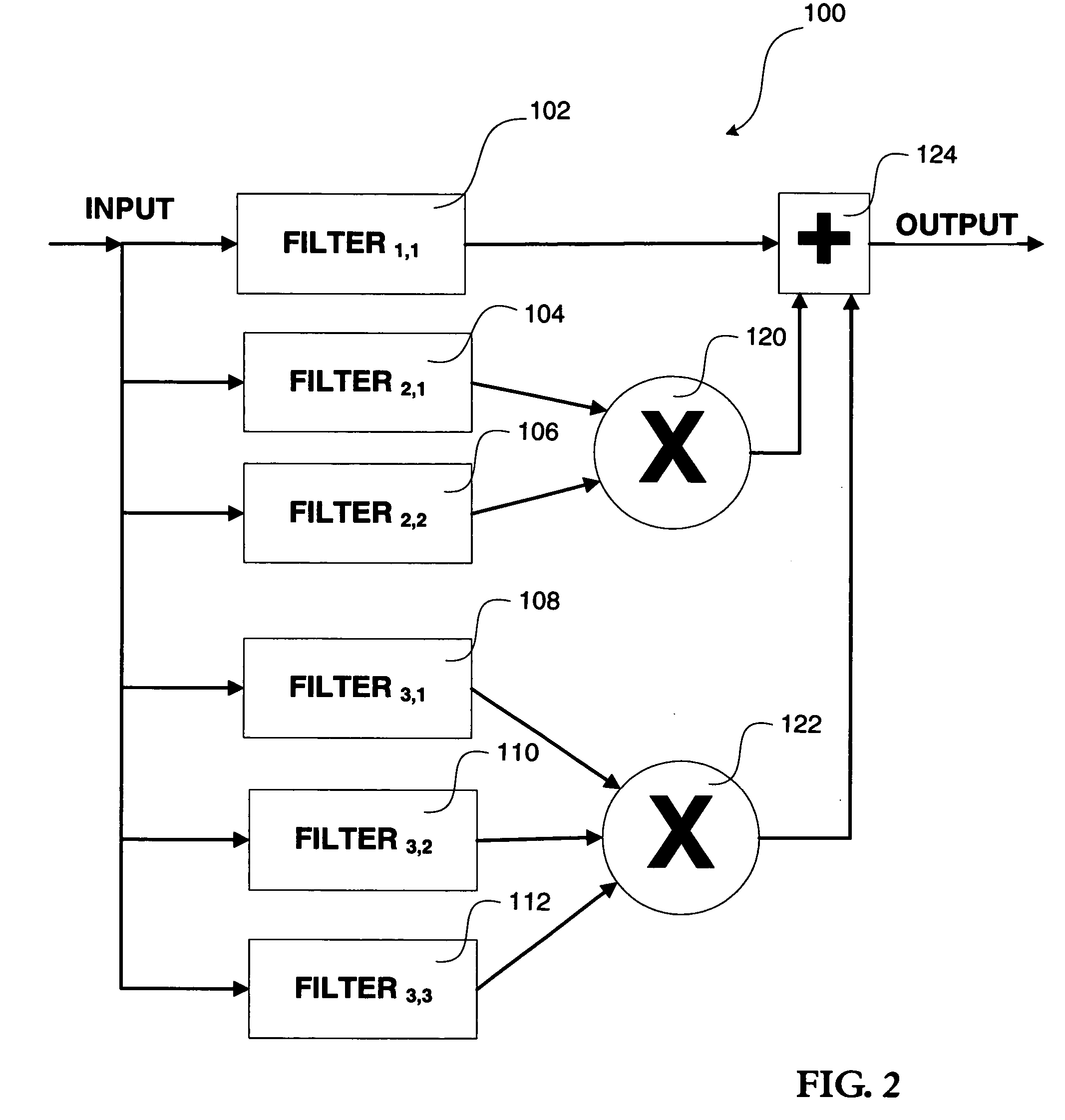Linearity corrector using filter products
- Summary
- Abstract
- Description
- Claims
- Application Information
AI Technical Summary
Benefits of technology
Problems solved by technology
Method used
Image
Examples
Embodiment Construction
[0020] As was mentioned above, previous proposed solutions have been based on Volterra filters. However, since Volterra filters would be very large and difficult to implement in connection with ADCs, a solution that will utilize a more manageable filter design, while still reducing some of the remaining dominant distortions, would be desirable. Taking the Volterra filter as a starting point, the generalized non-linear filter system can be defined mathematically as: y(t)=h0+∑k=1n(∑j1=0N-1∑j2=0N-1 … ∑jk=0N-1hj1,j2, … ,jk ∑i=1kx(t-ji))(Eq. 1)
where N is the impulse response length of the filter, and k is the filter order index.
[0021] For example, if n=3, then we have the sum of a DC value (h0), a linear FIR filter term at k=1, a 2nd-order distortion filter at k=2, and a 3rd-order filter at k=3. Accordingly, for n=3, the Volterra filter can be expressed as: y(t)=h0+∑j1=0N-1hj1x(t-j1)+∑j1=0N-1∑j2=0N-1hj1,j2x(t-j1) x(t-j2)+∑j1=0N-1∑j2=0N-1∑j3=0N-1hj1,j2,j3...
PUM
 Login to View More
Login to View More Abstract
Description
Claims
Application Information
 Login to View More
Login to View More - R&D
- Intellectual Property
- Life Sciences
- Materials
- Tech Scout
- Unparalleled Data Quality
- Higher Quality Content
- 60% Fewer Hallucinations
Browse by: Latest US Patents, China's latest patents, Technical Efficacy Thesaurus, Application Domain, Technology Topic, Popular Technical Reports.
© 2025 PatSnap. All rights reserved.Legal|Privacy policy|Modern Slavery Act Transparency Statement|Sitemap|About US| Contact US: help@patsnap.com



